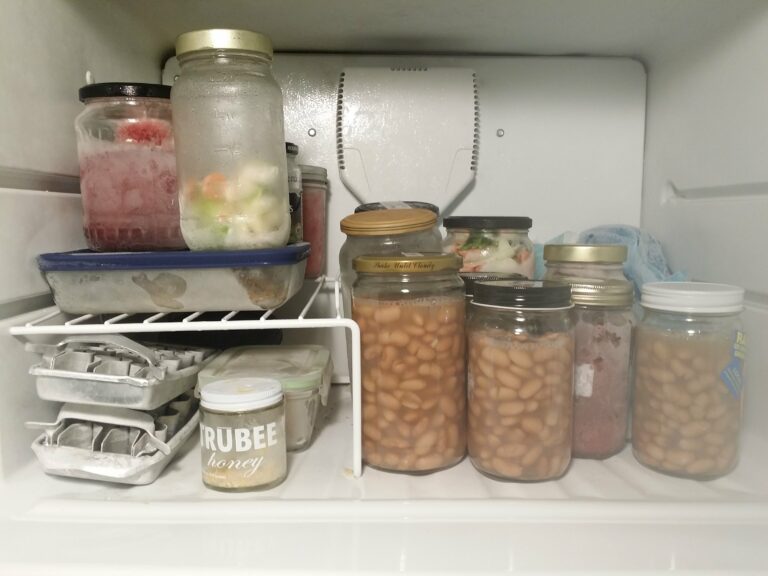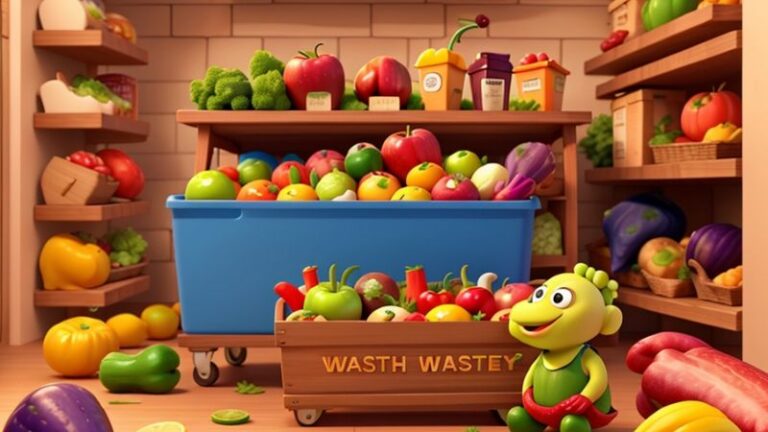Creating Diy Plant Pots From Recycled Materials: Eco-Friendly And Fun!
Today we discuss Diy Plant Pots From Recycled Materials. We have just the solution for you: DIY plant pots from recycled materials! Not only will you be able to unleash your creativity, but you’ll also be doing your bit for the environment.
Imagine transforming discarded items into beautiful homes for your plants, all while reducing waste. In this article, we’ll show you some simple and fun ways to repurpose everyday objects into unique plant pots. Get ready to get your hands dirty and embark on a sustainable and rewarding journey of creating DIY plant pots from recycled materials.
DIY Plant Pots from Recycled Materials:
Welcome to the world of DIY plant pots made from recycled materials! If you’re a plant lover and passionate about sustainability, this is the perfect guide for you. Creating your own plant pots not only adds a unique touch to your indoor or outdoor space, but it also helps reduce waste by utilizing materials that would otherwise end up in the landfill. In this article, we’ll explore various creative ideas and techniques for making plant pots using everyday objects you may already have at home. So, let’s roll up our sleeves and get started on this eco-friendly adventure!
Choosing the Right Materials:
Before diving into the world of DIY plant pots, it’s important to understand the materials you can use and how they can affect your plants’ growth. Here are some popular options:
Plastic Containers
Plastic containers such as soda bottles, milk jugs, or yogurt cups are easily available and can be transformed into fantastic plant pots. Make sure to clean them thoroughly before reusing and consider adding drainage holes for proper water flow.
Tin Cans
Tin cans are a versatile choice for creating plant pots. They are sturdy, easy to decorate, and can be transformed into hanging pots or even vertical gardens. Ensure you remove any sharp edges and create drainage holes for healthy plant growth.
Mason Jars
Mason jars not only add a rustic charm to your plant collection but also provide excellent drainage. They work well for smaller plants and herbs, and you can play with different sizes and colors to create an aesthetic display.
Wooden Crates
If you’re looking to showcase multiple plants together or create a mini garden, wooden crates are a wonderful option. Ensure the wood is untreated and line the crate with a plastic sheet before filling it with soil and your favorite plants.
Getting Creative with Decoration:
Now that you have your materials ready, it’s time to let your creativity shine and make your plant pots visually stunning. Here are some ideas to get you started:
Paint and Patterns
One of the simplest ways to transform a recycled plant pot is to paint it using vibrant colors or create patterns that match your personal style. Use acrylic paint or waterproof markers for longevity, and don’t forget to seal your design to protect it from weather conditions.
Decoupage
Decoupage is a technique where you layer pieces of paper or fabric onto a surface using adhesive. This method allows you to add texture and visual interest to your plant pots. Consider using old magazines, wrapping paper, or even fabric scraps to create unique designs.
Stenciling
If you want to add intricate designs to your plant pots but lack artistic confidence, stenciling is the way to go. You can find a wide variety of stencils in craft stores or create your own. Use acrylic paint and a stencil brush to achieve crisp and clean patterns effortlessly.
Natural Materials
Embrace the beauty of nature by incorporating natural materials into your plant pots. You can use seashells, pebbles, twigs, or even pressed flowers to create a rustic and organic look. Secure these natural elements with glue or resin for a long-lasting finish.
Essential Tips for Plant Care:
Now that you have your DIY plant pots ready, it’s important to ensure your plants thrive in their new homes. Here are some essential tips for plant care:
Proper Drainage
To prevent waterlogging and root rot, ensure your plant pots have adequate drainage holes. Place a layer of gravel or small rocks at the bottom of the pot to facilitate water flow while still retaining enough moisture for the plant’s roots.
Watering Schedule
Different plants have different watering needs, so it’s crucial to research and understand each plant’s requirements. Avoid overwatering by checking the soil’s moisture level before watering again. Consider using a moisture meter to accurately assess when it’s time to water your plants.
Sunlight and Placement
Most plants thrive in bright, indirect sunlight. Observe the conditions in your home or outdoor space and choose plant varieties accordingly. Some plants may require more shade, while others thrive in direct sunlight. Proper placement will ensure healthy growth and vibrant foliage.
Fertilization
To keep your plants nourished, it’s essential to provide them with proper fertilization. Choose organic fertilizers or create your own compost to enrich the soil. Follow the recommended instructions for each plant species and avoid over-fertilizing, as it can harm your plants.
Taking your DIY Plant Pots to the Next Level:
Now that you’re well-versed in creating DIY plant pots, why not take it a step further and explore advanced techniques? Here are some ideas to elevate your plant pot game:
Vertical Gardens
Vertical gardens are an excellent way to maximize space and create a stunning visual impact. You can repurpose pallets, build a trellis, or hang pots on a wall-mounted frame. Get creative with plant arrangements and experiment with different textures and colors.
Self-Watering Systems
If you often forget to water your plants or are looking for a low-maintenance option, consider implementing self-watering systems. These systems automatically supply water to your plants, ensuring they remain adequately hydrated even when you’re away or busy.
Macramé Hangers
Elevate the style of your hanging plant pots by creating macramé hangers. Macramé is an ancient art of knotting textiles to create beautiful designs. You can find tutorials online or join a local workshop to learn various techniques and create intricate hangers for your plant pots.
Succulent Arrangements
Succulents have gained tremendous popularity due to their unique shapes and low maintenance requirements. Create eye-catching arrangements by combining different varieties of succulents in a single pot or by arranging them in a terrarium. Experiment with different colors, sizes, and textures for a stunning display.
With these advanced techniques, you can turn your DIY plant pots into works of art and showcase your creativity and passion for plants.
Frequently Asked Questions
What materials can I use to make DIY plant pots from recycled materials?
You can use a variety of materials to make DIY plant pots from recycled materials. Some common options include plastic bottles, tin cans, old buckets, wooden crates, and even broken ceramic dishes. Get creative and find items that are no longer in use but can be repurposed into unique plant pots.
How do I prepare the recycled materials for making plant pots?
To prepare recycled materials for making plant pots, start by cleaning them thoroughly to remove any dirt or debris. If using plastic bottles or tin cans, remove labels and wash the inside and outside. For wooden crates, sand down any rough edges or surfaces. Once clean, let the materials dry completely before proceeding with the DIY project.
What steps are involved in making DIY plant pots from recycled materials?
The steps involved in making DIY plant pots from recycled materials may vary depending on the material chosen, but here is a general process to follow:
1. Collect and clean the recycled materials.
2. Decide on the size and shape of your plant pots.
3. Cut or modify the materials accordingly.
4. Add drainage holes if necessary.
5. Paint or decorate the plant pots as desired.
6. Fill the pots with appropriate soil and plant your chosen plants.
Remember to consider the specific needs of the plants you intend to grow and adjust the process accordingly.
Can I use any type of recycled material as a plant pot?
While many different materials can be repurposed as plant pots, not all materials are suitable for all plants. For example, certain plants may require better drainage, while others may need more insulation. It’s important to assess the specific needs of your plants and choose recycled materials that will provide them with a suitable environment to thrive. Research the plant species to determine the best-suited materials for their growth and consider factors like water retention, insulation, and stability.
How do I ensure proper drainage in DIY plant pots made from recycled materials?
Proper drainage is essential for healthy plant growth. To ensure adequate drainage in DIY plant pots made from recycled materials, you can follow these steps:
1. Drill or puncture holes in the bottom of the pots if using plastic bottles or tin cans.
2. Place a layer of small rocks or pebbles at the bottom of the pot to create a drainage layer.
3. Add a layer of coarse sand or activated charcoal on top of the drainage layer, which helps filter excess water.
These steps will help prevent water from pooling at the bottom of the pot, allowing the plant’s roots to breathe and preventing root rot.
How can I make my DIY plant pots made from recycled materials more visually appealing?
To make your DIY plant pots made from recycled materials more visually appealing, you can try various techniques:
1. Paint the pots using acrylic or spray paint in vibrant colors or patterns.
2. Decorate the pots with decoupage, using cut-out images from magazines or patterned paper.
3. Wrap the pots with twine, rope, or fabric for a rustic or boho look.
4. Use stencils to create unique designs on the surface of the pots.
5. Experiment with different textures or add mosaic tiles to create a mosaic effect.
These ideas will help transform your recycled materials into eye-catching plant pots that can enhance the overall aesthetics of your space.
Final Thoughts
creating DIY plant pots from recycled materials offers numerous benefits. Not only does it contribute to reducing waste and minimizing environmental impact, but it also allows individuals to showcase their creativity while adding a personal touch to their gardens or indoor spaces. By repurposing items such as old containers, bottles, or even tires, one can create unique and eco-friendly plant pots. Additionally, this approach is cost-effective and easily accessible, making it suitable for anyone interested in gardening or embracing sustainable practices. DIY plant pots from recycled materials present an excellent opportunity to combine artistic expression with environmental consciousness.



